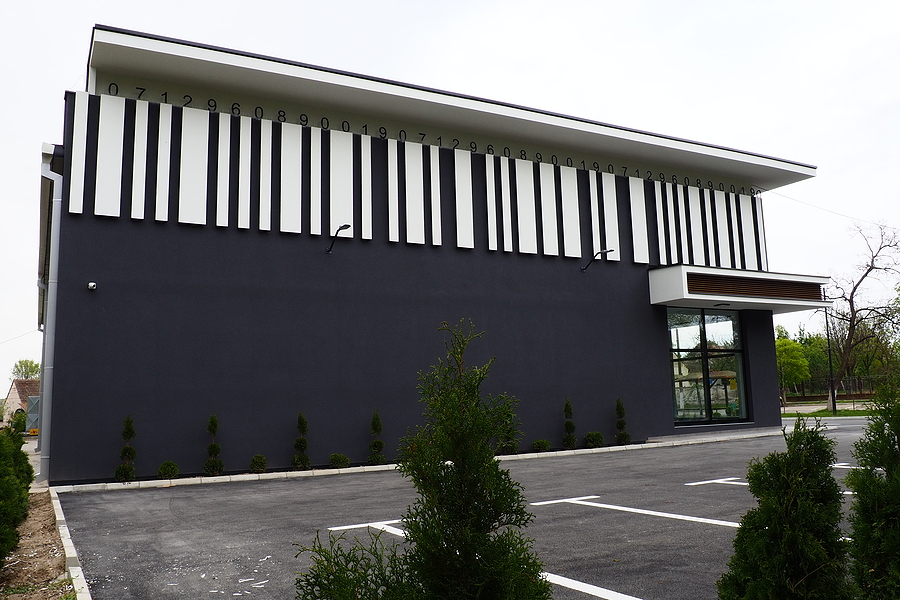
New vs. Used Modular Buildings: A Comprehensive Comparison
Modular buildings have been on the rise in recent years due to their efficiency, speed, and adaptability. As the market expands, potential buyers find themselves torn between purchasing new modular structures or opting for used ones. In this article, we aim to dissect the advantages and disadvantages of both choices, shedding light on costs and the various types of modular buildings available.
New Modular Buildings
Advantages:
- Customization: New modular buildings offer a blank slate, allowing buyers to tailor the design to meet specific requirements, whether it’s for offices, homes, or schools.
- Latest Technology: New models typically incorporate the latest in building materials and energy-efficient technologies.
- Warranty: Manufacturers often offer warranties for new buildings, ensuring protection against potential defects.
- Longevity: With no previous wear and tear, new modular buildings might offer a longer life span.
Disadvantages:
- Higher Initial Costs: The upfront cost of a new modular building tends to be higher than its used counterpart.
- Lead Time: Customizing a new building might require a longer wait, especially if it involves specific design elements.

Used Modular Buildings
Advantages:
- Cost-Efficient: One of the most attractive points of used modular buildings is their reduced price, making them more accessible for tight budgets.
- Faster Procurement: Used buildings are often available immediately, eliminating manufacturing or customization waits.
- Environmental Benefits: Purchasing a used modular building promotes recycling, reducing waste and the demand for new raw materials.
- Potential for Upgrades: Some used buildings can be retrofitted or remodeled, allowing for customization at a fraction of the price of a new building.
Disadvantages:
- Wear and Tear: Previous usage might mean more maintenance and repairs. It’s essential to thoroughly inspect the building before purchase.
- Limited Customization: Used buildings might not align perfectly with specific needs, given they were initially designed for another purpose.
- Shorter Lifespan: Depending on its age and condition, a used modular building might have a shorter operational life compared to a new one.
Costs:
- New Modular Buildings: Costs can vary based on size, materials, customization, and location. However, while they can be up to 20% cheaper than traditional constructions, they are generally more expensive than used modular buildings.
- Used Modular Buildings: The price of a used modular building can be substantially less, sometimes up to 50% cheaper than a new one. However, factors like relocation, site preparation, and potential refurbishments can add to the overall cost.
Types of Modular Buildings:
- Permanent Modular Buildings: Designed with a longer lifespan in mind, they can serve as offices, schools, healthcare facilities, or residential homes.
- Relocatable Modular Buildings: Ideal for temporary needs, these structures are easy to set up, dismantle, and relocate. Common uses include construction site offices, classrooms, and temporary healthcare facilities.
- Modular Homes: These are residential structures designed for permanent living, often indistinguishable from traditionally-built homes.
- Specialized Modular Facilities: These include structures like medical clinics, labs, or data centers, specifically tailored to unique needs.
The decision to opt for new or used modular buildings boils down to individual needs, budget, and project timelines. While new buildings offer customization and longevity, used ones provide cost savings and quicker setups. It’s essential to assess needs, conduct thorough inspections (especially for used buildings), and consider long-term implications before making a decision. With a clear understanding of what’s available, making the right choice becomes significantly more straightforward.

Are Modular Homes Safe From Tornados?
Modular homes, also known as prefabricated or prefab homes, are built in sections in a factory setting and then transported to a site for assembly. The safety of modular homes in extreme weather conditions, such as tornadoes, is a concern for many. Here’s an overview of their safety with respect to tornadoes:
Construction Quality:
- Standards Compliance: Modular homes are built according to local, state, or regional building codes, much like traditional homes. In many cases, because they need to withstand transport from the factory to the site, they might be even more structurally sound than site-built homes.
- Foundation: The safety of a modular home, especially in the face of a tornado, heavily relies on its foundation. Homes anchored to permanent foundations generally fare better during storms than those on temporary or non-traditional foundations.
Vulnerability to Tornadoes:
- Wind Resistance: No structure, whether modular or traditional, can be guaranteed to withstand the most extreme tornadoes (EF4 and EF5 on the Enhanced Fujita scale). However, well-built modular homes with strong foundations can withstand lower-level tornadoes similarly to site-built homes.
- Flying Debris: A significant danger during tornadoes comes from flying debris. Modular homes are as vulnerable as traditional homes to damage from airborne debris.
- Mobile vs. Modular: It’s essential to differentiate between modular homes and mobile homes. Mobile homes, even those anchored down, are particularly vulnerable to tornadoes. Modular homes, once set on their foundation, behave more like traditionally built homes and are generally safer than mobile homes.
Safety Tips:
- Safe Room: Whether you live in a modular or traditional home, in tornado-prone areas, it’s advisable to have a safe room or storm cellar. This provides the best protection against a tornado.
- Anchoring: Ensure that the modular home is properly anchored to its foundation. This can significantly reduce the risk of the home being lifted or shifted by strong winds.
- Location: Avoid building in floodplains or open areas that can act as a wind tunnel, amplifying the storm’s effects.
While modular homes that are properly constructed and anchored to solid foundations can offer safety comparable to traditionally built homes during milder tornadoes, no home can be guaranteed safe against the most powerful tornadoes. Residents in tornado-prone areas should always have an emergency plan in place and take tornado warnings seriously, seeking shelter in a safe room, basement, or storm cellar if available.
How are Modular Buildings Different From Traditional Buildings?
Modular buildings and traditional (or “stick-built”) buildings differ primarily in their construction methodology, but there are several other nuances worth noting. Here’s a comprehensive comparison:
1. Construction Method:
- Modular Buildings: These structures are primarily built off-site in factories. Each module or section of the building is constructed in a controlled environment, then transported to the site and assembled.
- Traditional Buildings: Construction occurs entirely on-site. Materials are delivered to the site, and the building is erected from the ground up in its intended location.
2. Construction Time:
- Modular: The controlled factory environment allows for simultaneous site work and building production, reducing construction time by up to 30-50%. Weather-related delays are also minimized since most of the construction happens indoors.
- Traditional: Construction can be lengthier due to susceptibility to weather conditions, site issues, and the sequential nature of the process.
3. Flexibility:
- Modular: Modules can be disassembled and relocated if needed. This makes modular buildings especially suitable for temporary purposes or situations where flexibility is a priority.
- Traditional: Once constructed, these structures are permanent and cannot be moved.
4. Design & Customization:
- Modular: While there’s a misconception that modular buildings are limited in design, modern modular construction offers a wide array of customization options. However, the design might need to accommodate transport considerations.
- Traditional: Offers a high degree of flexibility in design since there are no constraints related to module transport.
5. Quality Control:
- Modular: Building in a controlled factory environment allows for consistent quality, with regular inspections and a reduction in material exposure to adverse weather conditions.
- Traditional: Quality can vary depending on the skill of on-site labor, weather conditions, and other site-specific variables.
6. Environmental Impact:
- Modular: Often touted as a more sustainable option because factory precision results in less material waste. The controlled environment also minimizes disturbances to the building site.
- Traditional: Might produce more waste due to the need for on-site cuts and adjustments. The construction process can also have a more extended impact on the local environment.
7. Cost:
- Modular: Generally, modular construction can be more cost-effective due to reduced construction time, labor costs, and waste. However, transport costs for the modules can offset some of these savings.
- Traditional: Might have higher labor costs and longer construction times, but doesn’t have the transport costs associated with modular building.
8. Structural Integrity:
- Modular: Because modules need to be transported, they’re often built more robustly than traditional construction methods might require. Once assembled, they can be as durable as stick-built structures.
- Traditional: The strength and durability depend on the materials used and construction quality. Well-built traditional homes can last for centuries.
Both modular and traditional buildings have their advantages and best-use scenarios. The choice between them often boils down to the project’s specific needs, timeline, budget, and desired flexibility. While modular construction offers speed, efficiency, and potential cost savings, traditional construction provides on-site craftsmanship and potentially broader design freedom.
